Changing The Game
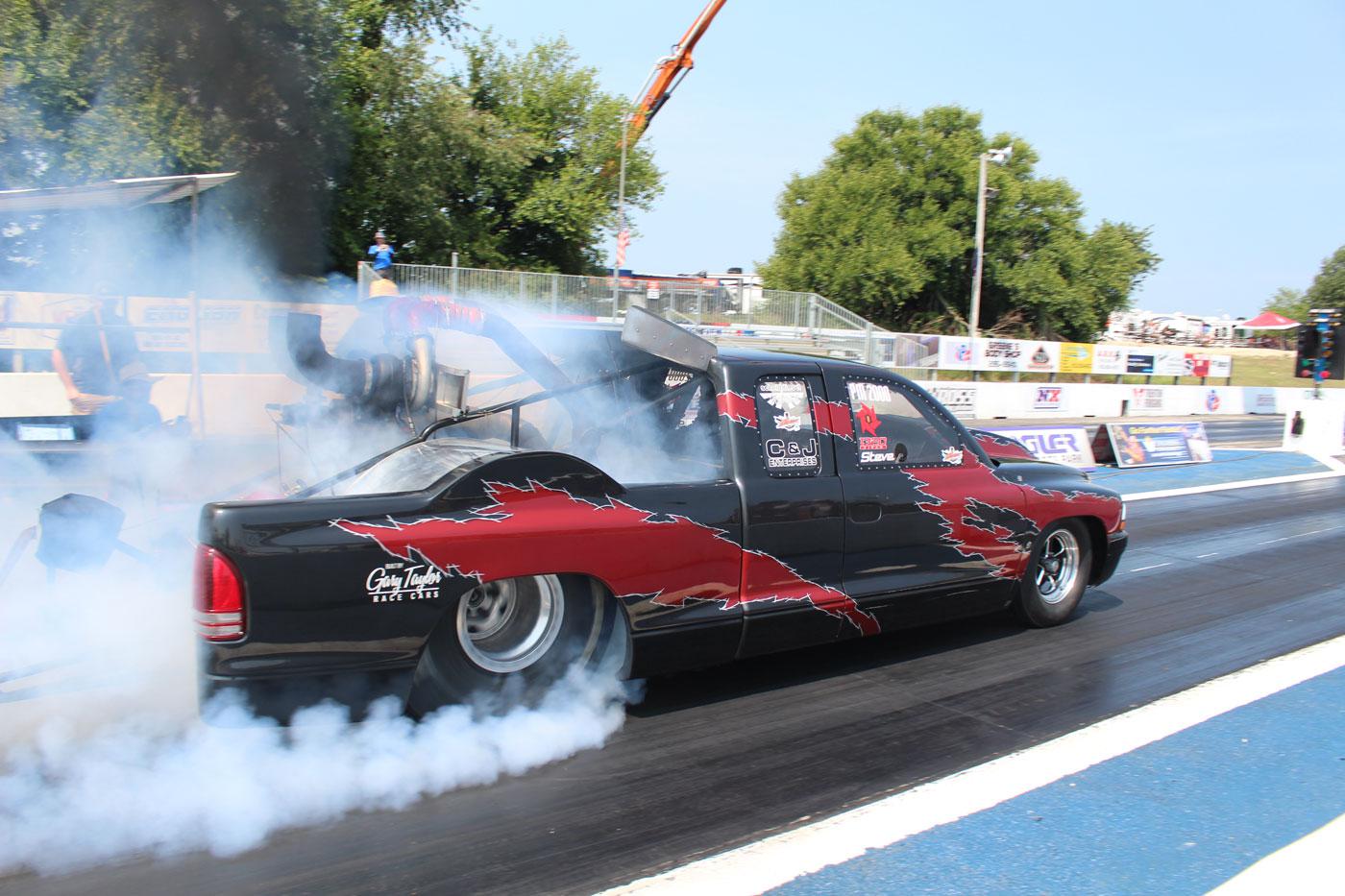
Innovation and increased levels of aftermarket support have been key to making diesel drag racers not only quicker and faster but also competitive in classes typically dominated by traditionally fueled vehicles.
Diesel drag racing has come a long way in a short period of time.
Consider these benchmarks: In 2004, Scott Bentz made the first 7-second pass in a diesel dragster he built himself when the torque from his Cummins engine twisted the frame he had purchased.
Not quite 20 years later, at Duck X Productions’ Lights Out 14 in February, Ryan Milliken’s Cummins-powered 1969 Nova ran a best of 4.17 seconds at 181 mph and made it to the semi-finals of the highly competitive X275 class. His speed through the traps was faster in the eighth-mile than Bentz’s dragster went in the quarter. How did that rapid evolution happen?
One of the first vehicles to go seriously fast was the Scheid Diesel dragster. As owner Dan Scheid of Scheid Diesel Service Company in Effingham, Illinois, was working on dominating the world of sled pulling, he was concurrently developing a drag racing effort using a Spitzer chassis dragster. After more than two years of development, Scheid took the dragster record away from Bentz in 2006 with a 7.55-second pass at 183 mph. This was accomplished with a traditional hardtail chassis setup and Lenco transmission, much like the other gas- and alcohol-powered dragsters it would run against in the Top Dragster class.
Another person familiar to the diesel scene in the “old days” was John Robinson, who started his diesel drag racing career with a Cummins-powered Altered, its engine backed by a Dodge-based four-speed transmission. After a few seasons, Robinson whittled his elapsed times down into the 8-second range, which was respectable considering the dragster’s massive weight.
For several years, the National Hot Rod Diesel Association (NHRDA) in Arlington, Washington, had some of the most rapid development of any diesel drag racing in its Pro Street and Super Street classes. Pro Street trucks had to weigh 4,500 pounds and had a basically open rulebook, while Super Street trucks were more street-based and had to weigh 6,000 pounds. Still, some of the speeds these trucks were seeing were impressive. Pro Street trucks started running 10s, then 9s, then finally 8s, while Super Street trucks were breaking into the 9s even with the class’s high weight minimum. All around the country, diesels were making an impression at local bracket races, their high levels of boost making them less sensitive to weather conditions and, therefore, more consistent.
The quickest diesel at press time is the featherweight Hollyrock Customs dragster powered by a nitrous-assisted twin-turbo Duramax and driven by Mattie Graves, who has run an astounding 3.96 at 187 mph in the eighth-mile, and is one of only two diesel-powered vehicles to run a 3-second pass in the eighth. She set the record during a test session at Maryland International Raceway in November 2022.
The Common-Rail and Nitrous Revolution
The joining of common-rail technology and nitrous injection has made huge strides in turning diesels into competitive drag racers. The first company to prove this was Banks Power in Azusa, California, which debuted a high-rpm, parallel-turbo, nitrous-injected Duramax-powered S10 tube-chassis drag truck, which was built to set records in the (diesel) Pro Mod category. The Banks drag truck was one of the first that proved that gas-style technology would work on diesels, and that 2,000 lbs.-ft. of torque wasn’t necessary to get moving when the truck was light. The Banks truck was the first non-dragster in the 7s, eventually running a best of 7.72 seconds in the quarter-mile in 2008. For the rest of the diesel drag racing community, this would be a harbinger of things to come.
Eventually some other serious common-rail Duramaxes would surface and become hard runners, with Wade Moody campaigning a Pro Mod truck, and then later a dragster, and even Nitrous Express’ Mike Wood getting onboard and running his own Duramax dragster. Racers started spraying 400, 500, or even 600 hp worth of nitrous on top of boost to go even quicker and faster. It was clear it wasn’t just a Cummins world anymore.
The 2,000-Horsepower Plateau
It’s important to remember that racers were pushing diesel engines that were originally rated at 160–300 hp past the 2,000-hp mark. But not much further. For a few years, whether in sled pulling or drag racing, Cummins or Duramax (or the rare Power Stroke) injection technology, cylinder heads (or lack thereof), and reliability issues kept diesel engines around the 2,000-hp level. Drivetrain components were a limiting factor too, as 2,000 hp also meant more than 3,000 lbs-ft. of torque, often around a parts-shattering 3,000–4,000 rpm. To push past this plateau, a whole new industry would emerge.
Transmission technology struggled to keep up as well. In most pickups, the Dodge-based 47RH and 48RE four-speed transmissions were faced with the herculean task of propelling diesel drag racers down the quarter- and eighth-mile, all while dealing with nearly 10 times the torque they were designed for. Allisons weren’t considered by serious drag racers because they were too heavy and didn’t shift quick enough, and traditional TH350 and TH400 automatics weren’t strong enough and lacked lock-up torque converters.
A New Age of Competition Diesels
As diesel drag racing grew in popularity, the engines started to receive aftermarket support more in line with what was available for gas engines.
“We’ve always been into V8s, so we started with a Duramax block,” noted diesel engine builder Jeremy Wagler of Wagler Competition Products, Odon, Indiana. “Strength-wise, it could be compared to a Top Fuel engine; we just have to deal with a lot of torque. The heads were also a major development. We started out with heavily ported stock versions, but eventually made our way to completely custom solid [no water] heads.”
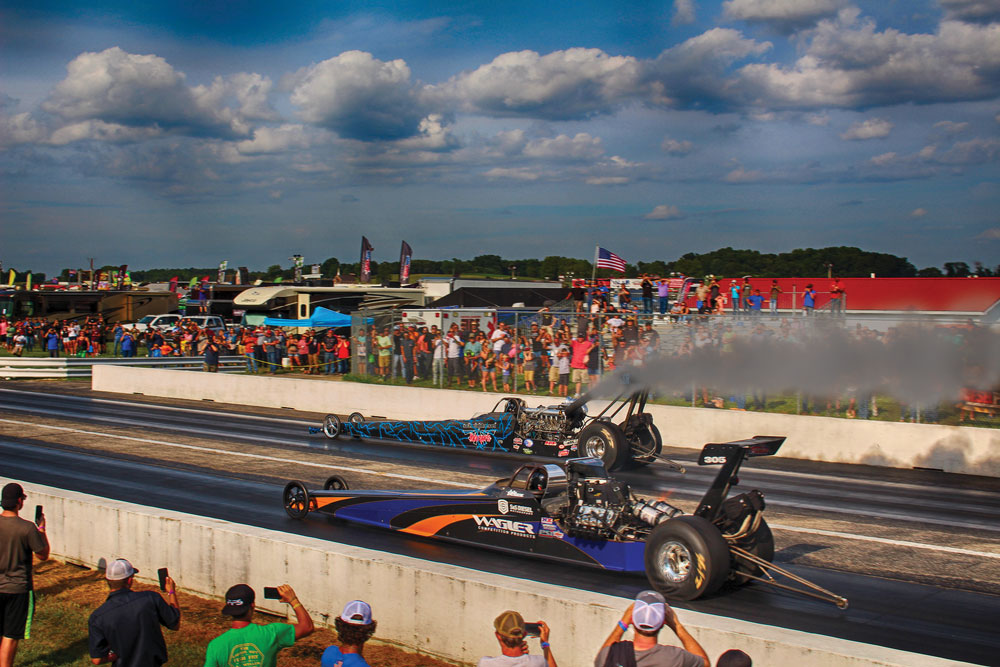
Wagler also noted that long blocks (depending on options) come in at around $50,000, about the same as a comparable 3,000-hp gas engine, with less maintenance.
On the inline-six side, at around 2,000 hp, and especially with a lot of timing, Cummins engine blocks would split right down the middle. Now a number of companies, including Wagler, LSM Systems Engineering, and Scheid Diesel, offer Cummins aluminum blocks, which allow diesel drag vehicles to make more reliable power.
“Not only will an aluminum block shave nearly 140 pounds from the engine, it will be a lot stronger,” noted Scheid. “This, combined with the fact that performance aluminum cylinder heads came into the picture around the same time, meant huge power increases.”
Progress was made with injection systems as well. “When it comes to what we know now versus five to seven years ago, it’s been leaps and bounds,” explained Justin Norris of S&S Diesel Motorsport, Seymour, Indiana. “We initially just tried big nozzles and multiple pumps. Sled pullers were running three, even four CP3 pumps at one point. Where we ended up [now] is a greater understanding of how the entire injection system works. Just throwing the biggest parts out there on your vehicle won’t always work.
“With injectors and pumps it’s about flow and refinement,” he continued. “We can run two CP3 pumps and injectors that flow 400% more than stock and make a controlled 3,000-plus hp and spin the engines past 5,000 rpm.”
Norris also noted that MoTeC and Bosch controllers are an immense help in tuning the engines. “With the factory ECU, there are some things you just can’t do, but with these race ECUs, the tuning tables are wide open.”
Milliken, who runs Hardway Performance in Mary Esther, Florida, agreed. “The MoTeC is going to be big, and I think you’ll see a lot of people turning to it.”
More and more diesel racers are switching to radial classes, as the rise of factory-appearing bullet cars combined with highly prepped tracks has led to high-torque, high-horsepower radial cars that have practically infinite grip. These levels of torque and traction have led to a revolution in transmissions as well, and now one can buy a Turbo 400 with lockup that has virtually no original parts left.
“Our Supermax TH400-based diesel transmission has even more options than our regular max-effort gas transmission,” said Carl Rossler of Rossler Transmissions, Girard, Ohio. “Spooling and applying lock-up is always a challenge with diesels, so we’ve incorporated a multi-stage soft lockup as well as an adjustable dump valve, so spooling isn’t an issue. These transmissions have been tested in two-wheel drives, four-wheel drives, Cummins, Duramax, and Power Strokes.”
Today’s Diesel Drag Racers
Following is a brief look at some of today’s top diesel racers and the classes they compete in.
Class: NHRA Top Dragster
John Robinson is one of the racers who has been around since the beginning. “I remember they used to have us park way out in the weeds,” he said, laughing.
His diesel dragster always gets a lot of cheers from the crowd and interest in the pits, Robinson said. “Everyone loves an underdog, and even with all the shiny parts it’s still just a sub-400-inch truck engine to a lot of people. So far in this incredibly competitive category we’ve gone two or three rounds, but never made it to the finals. But we’ve definitely faced our share of issues to have success with a diesel.”
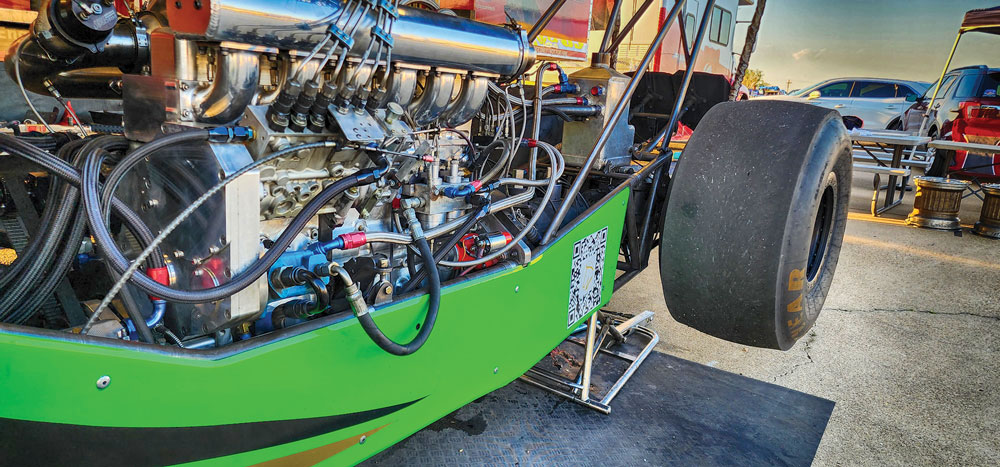
Scheid is another diesel heavy hitter in the Top Dragster class and is responsible for the injection pump, cylinder head, and a lot of the other hard parts that make these 2,500-hp mechanically injected monsters go down track. “We started to see hairline cracks in spots in the crankshaft, so we built a crank support for the engine,” said Scheid. “That helped, but in the end, it just moved the cracks to a different spot. Oddly enough, we don’t have this issue in pulling engines.”
Scheid is also one of the few racers who stuck with a big boost, no nitrous combination for years. “We were within a tenth of the eighth-mile record, and that was at 160 psi of boost and without any nitrous.” Begrudgingly though, he put a small (200–300 hp) shot on just this last year. “I decided that I was about the only one who still cared, and if nobody else did, I suppose I shouldn’t either,” he added.
The Lenco transmissions both Scheid and Robinson run have been in and out of both dragsters dozens of times, as weak points are found. “We run more than twice the amount of shift pressure than even the alcohol dragsters do,” noted Robinson. “We ended up actually having to make our own internal parts to get the trans to live with 4,000 lbs.-ft. at 4,000 rpm.”
Scheid agreed. “We ended up having to make our own 2.73-ratio gears to run the quarter-mile, as no one else made a set that was that tall, and that’s what we needed.”
The Scheid dragster, driven by Jared Jones, just set a new quarter-mile record with a 6.17-second pass at 229 mph, while Robinson has run 6.30s in the quarter-mile and holds the eighth-mile speed record at 4.10 seconds at 192 mph.
Class: X275 Drag Radial
“It may sound strange to say, but running a diesel engine doesn’t make you all that special,” said Milliken, who has been making waves in the X275 class. “There’s a lot more to racing than just the engine. You have to stage right, drive right, and have your mind right. There’s suspension tuning, power management, and a host of other factors.”
He also is quick to admit that for a long time, diesel racers were doing things completely backward. “You’d have a racer spool like crap, leave the line anyways, and run something like a 10-second ET at 150 mph,” he said. “If we can’t spool within 2–3 seconds and cut a 1.1–1.2 60-foot, we’re not even testing past that. You have to spool, and you have to leave the line.”
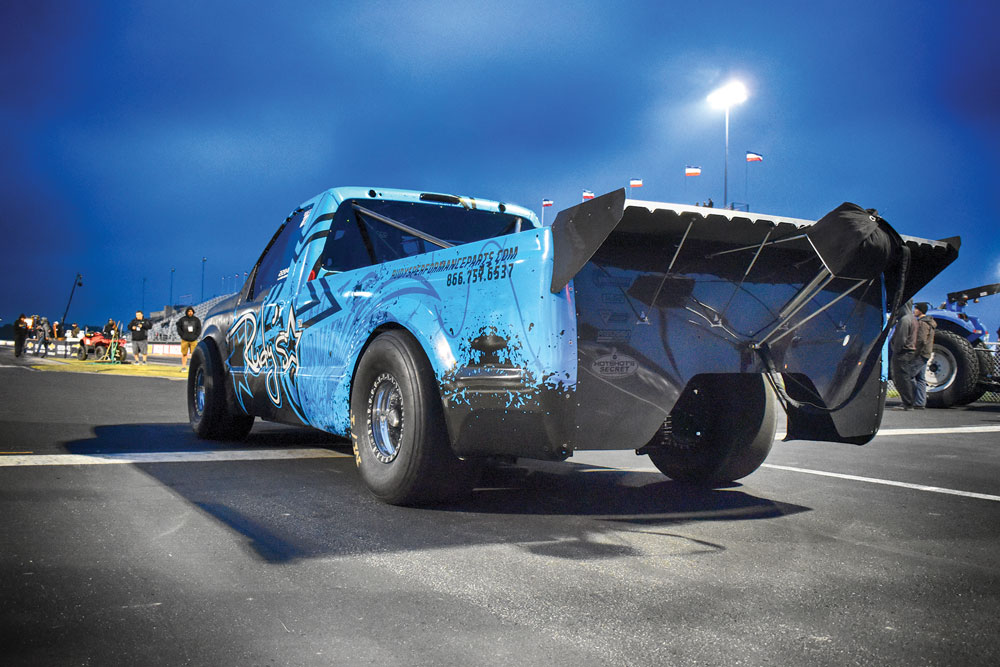
Milliken may not feel “special,” but running 180-plus mph in the eighth-mile in a door car still takes some doing. “Right now, we’re the heaviest car in the class at 3,350 pounds. Since we use two power adders to keep things clean, we’ve been saddled with a bunch of weight. That makes everything else a lot harder. The math said we’re more than 3,000 hp, but what I’d really like is for them to take some power away and make us lighter so it’s easier on parts.
“One of the advantages of racing a diesel is the lack of maintenance,” he added. “There are no spark plugs to check or pistons to swap because of a nitrous mishap. Sometimes all we do is change out a nitrous bottle and put more fuel in it.”
As much success as he’s had in the X275 class, Milliken admitted that it’s also been quite the effort. “Going this quick in a diesel, especially a big door car, is interesting for everybody, but we’ve been able to show that it can work.” Looking at it from a spectator standpoint, it’s also good for the sport. “Nowadays everyone loves different, and running heads-up with these all-out [gas] race cars is about as different as you can get,” he added.
Class: RWYB (Run What Ya Brung) No Prep
No prep racing has made a significant impact on the industry. Cars are being built specifically for it; it has helped the LS market skyrocket; and it’s good for tracks, airports, and spectators when done right. This type of tire-limited racing has attracted a large number of street-type cars, but there’s also been some controversy about where to put AWD vehicles, namely Skylines. Diesel trucks have entered too but have been put out fairly quickly, as it usually takes 5-second eighth-miles to keep up with the crowd, even on an unprepped surface.
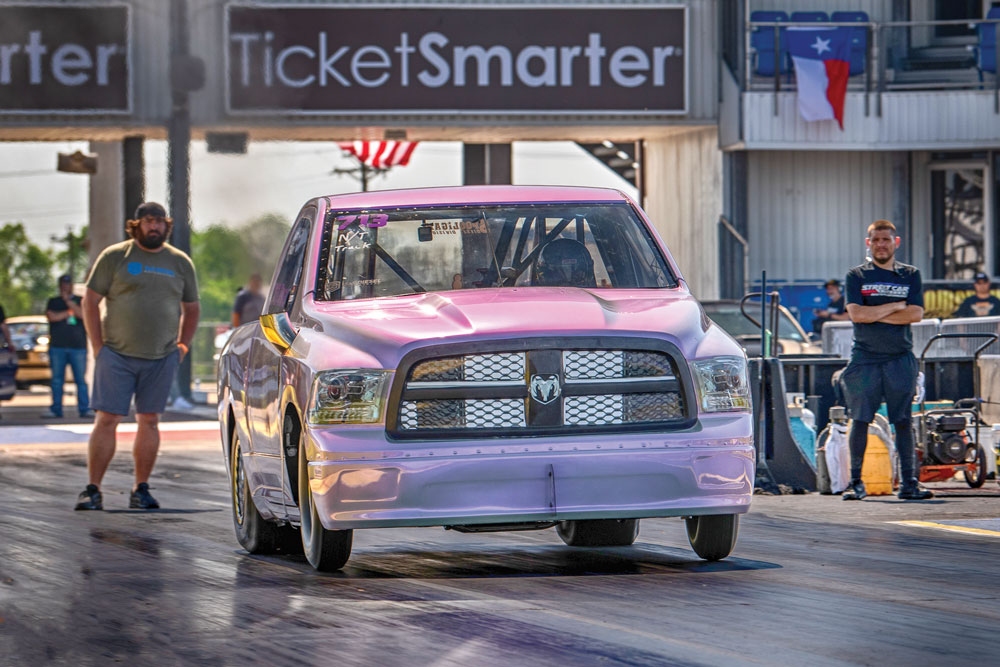
That changed when Ethan Patterson from Wilson Patterson Diesel in West Lafayette, Indiana, brought out his 4,400-pound 2006 Dodge Ram to the 2021 Thaw Out No Prep race at Darlington Dragway. The truck was light enough and had enough power (1,500 hp) to run with even the big-tire Pro Mods, as the surface was particularly rough, and he had the advantage of four 29.5-inch tires hooking. In the end he walked away with the $8,000 class purse, the first diesel to win such a race.
“You have to always keep improving though, because everyone else is doing the same,” said Patterson. “The truck has gone through a ton of upgrades, including a 6.7-liter deck plate engine built by WP Developments and machined by Scheid Diesel, a Freedom Racing Engines head, and 88-mm Garrett GTX55 turbo. We also have three stages of nitrous through a Hammertech Racecars Nitrous Cannon.”
In a bit of a separation from the norm, Patterson chose to stay with the 48RE-based Dodge transmission, but it’s been highly modified. “The trans has a custom valve body specifically for this truck, all three shafts are aftermarket, and it was built by us with top-of-the-line Raybestos GPZ clutches,” he noted. It seems to be getting the job done so far, and that’s with the truck making nearly 1,000 hp more now. “Our diesel will definitely be a threat in no prep,” he said.
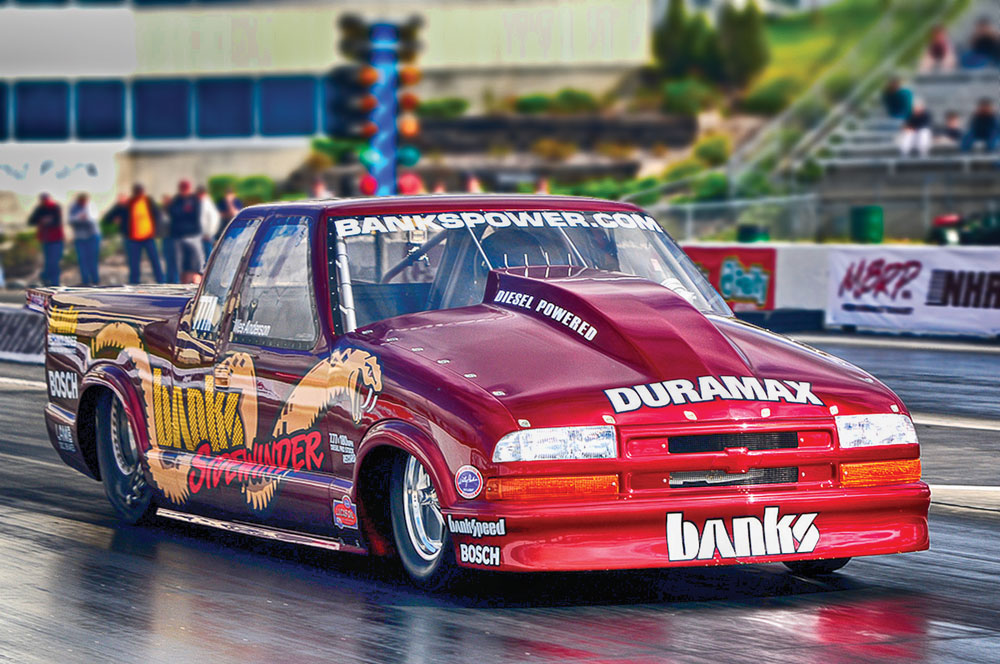
“It seems like we say this every year, but we’re still nowhere near the limit of diesel performance,” said Scheid.
Milliken agreed. “Right now we’re partnering with PPEI and building a Corvette Pro Mod that will have even more nitrous, and weigh 1,000 pounds less than the Nova,” he said. “That is going to be fun.”
Firepunk Diesel, whose Cummins-powered S10 was the first diesel of any type to break into the 3s, will also debut a new Pro Mod Duster that is lighter and will make more power than its old ride, proving diesel drag racing is a force to be reckoned with.
SOURCES
Banks Power
bankspower.com
Hardway Performance
hardwayperformance.com
Rossler Transmissions
rosslertrans.com
S&S Diesel Motorsport
ssdiesel.com
Scheid Diesel Service Co.
scheiddiesel.com
Wagler Competition Products
waglercompetition.com
Wilson Patterson Diesel
wp-diesel.com
 MEMBERSHIP LOGIN
MEMBERSHIP LOGIN JOIN PRI
JOIN PRI


